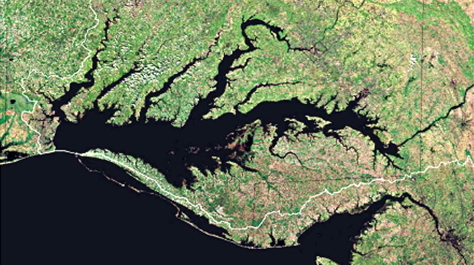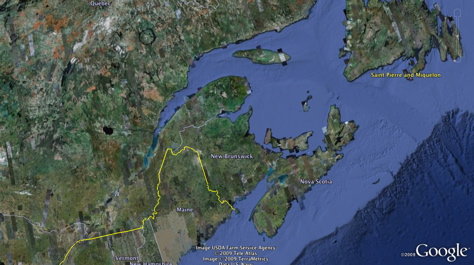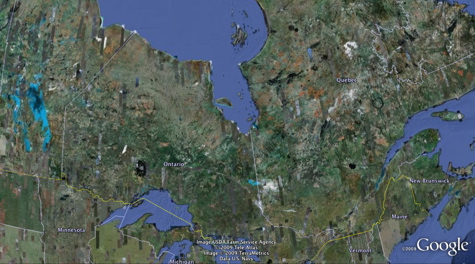How big is the Bay?
How does Chesapeake Bay compare in size to other estuaries?
Many sources describe Chesapeake Bay as the world’s third-largest estuary. Others consider it the second largest. We’ve even seen it described (incorrectly) as the largest estuary in the world. It has also been described as the largest estuary in the United States.
So what’s the real answer? That depends, of course, on how you define an estuary, how you measure its size, and how you apportion its boundaries if it is shared by multiple nations.
What is an estuary?
An estuary is typically defined as a coastal water body where a river mixes with the sea. Scientific definitions typically add several additional criteria, stating that an estuary and its waters must also be:
- semi-enclosed
- open to the ocean
- brackish
- affected by tides.
Based on these criteria, notable estuaries in North America include Chesapeake Bay, the Gulf of St. Lawrence, and San Francisco Bay. These criteria exclude other possible candidates, such as the Mississippi Delta (not enclosed), the Gulf of Mexico (not enclosed, not brackish), Puget Sound (not brackish), the Gulf of California (not brackish), and Hudson Bay (not brackish, not enclosed). Other waterbodies, such as James Bay, remain debatable.
How to measure an estuary’s size?
There are at least 3 different ways to measure an estuary’s “size:” surface area, shoreline length, and volume. Size estimates are also confounded by differing estimates of where any particular estuary “begins” or “ends”. Is this determined by a certain salinity value, the reach of tidal action, local geography, or some combination of these factors?
The (qualified) answer
Based on surface area, the Gulf of St. Lawrence is clearly the largest estuary in North America, covering 60,000 square miles (155,000 km2) compared to 4,480 square miles (11,600 km2) for Chesapeake Bay. The Bay, with a convoluted, fractal coastline of 11,684 miles, may well rank first based on this criterion; a quick measurement of the Gulf of St. Lawrence’s shoreline using Google Earth produced a length of 1,994 miles.
The question we have is this: if Chesapeake Bay is the third largest estuary in the world, as some sources claim, what other estuary besides the Gulf of St. Lawrence rounds out the triumvirate?




